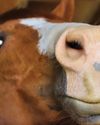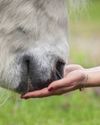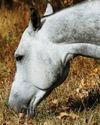
For most of us, colic is one of our worst nightmares for our horses. It is one of those situations that leaves us feeling particularly helpless, and waiting for the vet is a pretty fraught and tense time. However, in reality, the vast majority of all colic symptoms resolve without major intervention. Veterinary assessment is always advised and necessary, but it is good to know that if a horse does colic, it is usually a mild colic, and that surgery is certainly not the most likely route of treatment.
WHAT IS COLIC?
The definition of colic in horses is ‘abdominal pain’. The term ‘colic’ is therefore a broad one, as it encompasses all forms of abdominal pain, even those that do not involve the gastrointestinal (GI) tract. However, the most common forms of colic are caused by a GI disorder, most specifically a disorder of the colon. Among domesticated horses, colic is the leading cause of early death, with the incidence of colic in the general horse population estimated to be between 4 and 10% over the course of their lifetime.
KNOWING THE SIGNS
Due to the fact that the condition is so common, most horse owners are well versed in the signs of colic in horses. Some of these signs include pawing, rolling, bloating, sweating, disinterest in food and water, reduced or absent gut sounds, and general signs of distress.
This story is from the Issue 155 edition of HQ magazine.
Start your 7-day Magzter GOLD free trial to access thousands of curated premium stories, and 8,500+ magazines and newspapers.
Already a subscriber ? Sign In
This story is from the Issue 155 edition of HQ magazine.
Start your 7-day Magzter GOLD free trial to access thousands of curated premium stories, and 8,500+ magazines and newspapers.
Already a subscriber? Sign In

The Science Behind Tapering
The science behind tapering

Horse Treats
The ultimate guide

Horsey Hair Care
Tips and tricks for a healthy mane and tail

Horsey Hydration- The Importance Of Water In Winter
The importance of water in winter

A Horseback Safari
Abelana Game Reserve

The Psychology Of Riding Performance
Intrinsic motivation, part 7

10 Best Life Lessons From Horses
Life lessons from our horses

Breaking New Ground
The evolution of the Callaho Online Auction

Horse Psychology 101
Part 3: The horse's cognitive abilities

Colic Part 1
An owner’s worst nightmare